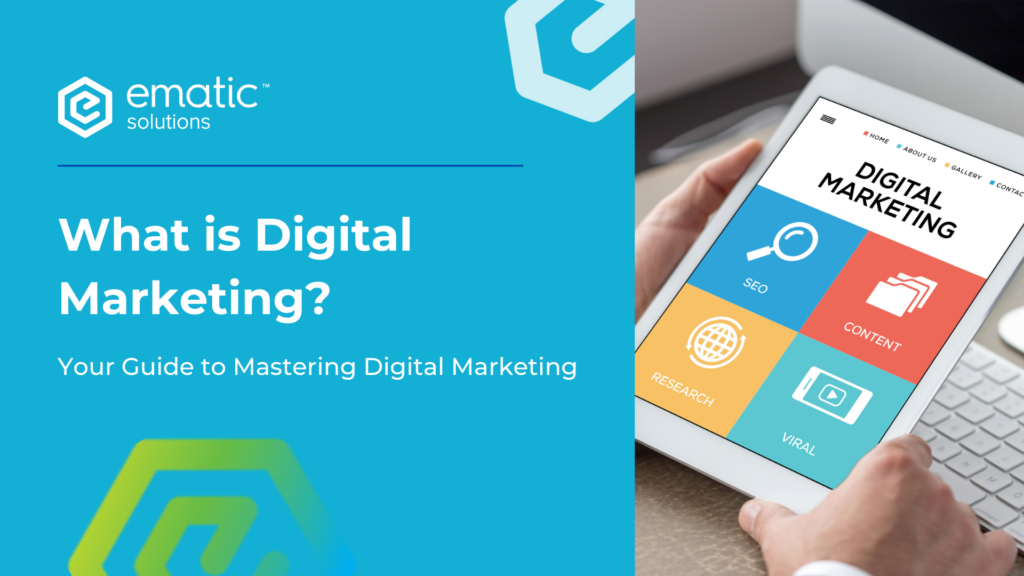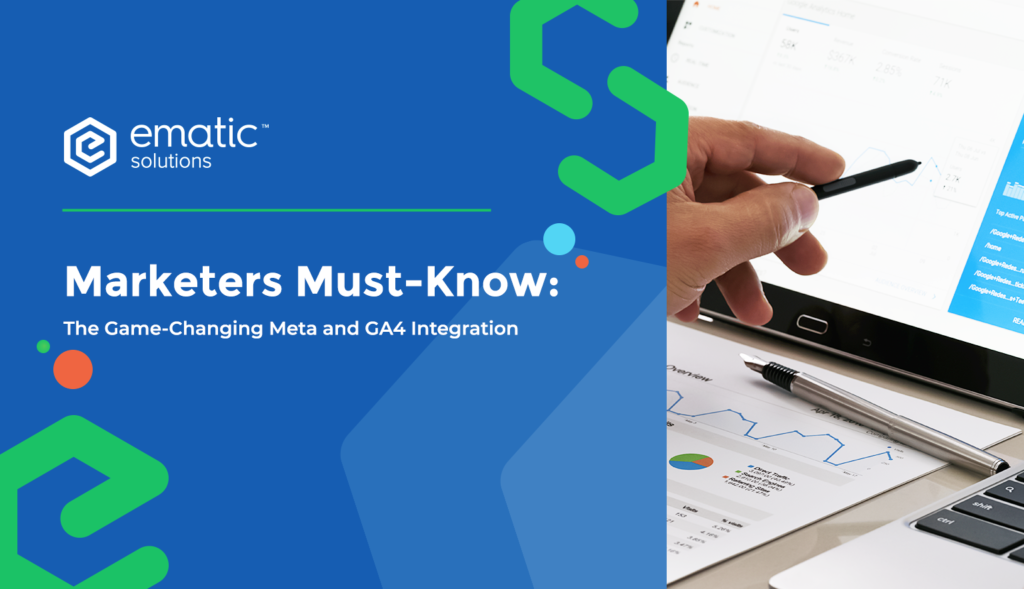What is Google PageSpeed Insights?

In today’s digital world, website performance plays a critical role in user experience and search engine rankings. Google PageSpeed Insights (PSI) is a powerful tool that helps website owners and developers assess and enhance the loading speed of their web pages. Let’s dive deeper into what PageSpeed Insights is, how it works, and why it matters for your website’s success. What is Google PageSpeed Insights? Google PageSpeed Insights is a free tool that analyzes the performance of a webpage, providing detailed insights into how fast your site loads on both desktop and mobile devices. It evaluates various factors that affect page speed and offers suggestions for optimization. The tool assigns a score ranging from 0 to 100, with a higher score indicating better performance. Scores are color-coded for easy interpretation: Score Range Performance Description Color Code 90 – 100 Excellent Performances Green 50 – 89 Needs Improvements Orange 0 – 49 Poor Performance Red Table 1: PageSpeed Score Ranges PageSpeed Insights is widely regarded as one of the essential tools for enhancing website performance, which can positively impact both user experience and search engine rankings. How Google PageSpeed Insights Works PageSpeed Insights analyzes a webpage by running various tests to determine how efficiently it loads. The tool relies on two primary types of data: Google PSI uses these metrics to calculate an overall score. Key performance indicators include: KPI Description Target Value To Achieve First Contentful Paint (FCP) Time it takes for the first visible content (text, image, etc.) to appear on the screen. 1.8 seconds or less Largest Contentful Paint (LCP) Measures how long it takes for the largest content element (image or text block) to fully load on the screen. 2.5 seconds or less Cumulative Layout Shift (CLS) Assesses visual stability by measuring how much the page layout shifts during loading. High CLS scores indicate unstable elements that move around unexpectedly. Less than 0.1 First Input Delay (FID) Tracks the time it takes for the page to respond to the first user interaction, such as clicking a button or link. Less than 100 milliseconds Table 2: Key Performance Indicators (KPIs) These metrics provide actionable insights for improving both loading speed and overall user experience. Why PageSpeed Matters Fast-loading websites are essential for retaining users and ranking well on search engines. Several reasons highlight why optimizing page speed is crucial: How to Use Google PageSpeed Insights Using Google PageSpeed Insights is simple. Follow these steps to get started: Tips for Improving Your PageSpeed Insights Score Here are some common strategies to improve your website’s performance and PageSpeed Insights score: Issues Definition Solutions Description Optimize Images Large images can slow down webpage loading times, leading to a poor user experience. Compress Images Use tools like TinyPNG or ImageOptim to reduce image file sizes without losing quality, ensuring faster load times while maintaining visual fidelity. Leverage Browser Caching Without caching, browsers must retrieve all resources from the server every time a user visits, leading to slower load times. Set Cache Expiration Configure your web server to enable caching for static resources (like images and CSS), allowing browsers to store these files for a specified time, speeding up subsequent page loads. Minify CSS, JavaScript, and HTML Unminified files contain extra characters like spaces and comments, which can bloat file sizes and impact loading times. Use Minification Tools Utilize tools such as CSSNano for CSS and UglifyJS for JavaScript to remove unnecessary characters from your code, decreasing the overall file size and improving load times. Use a Content Delivery Network (CDN) A single server may not efficiently deliver content to users in different geographic locations, resulting in longer loading times. Implement a CDN Distribute your website’s content across multiple servers located around the globe. This allows users to access your site from a nearby server, reducing latency and improving load times. Eliminate Render-Blocking Resources CSS and JavaScript files that block the rendering of the page can delay the display of visible content to users. Defer Non-Essential Scripts Modify the loading behavior of CSS and JavaScript files by using async or defer attributes in script tags. This allows the page to load without waiting for these resources to finish loading. Reduce Server Response Time Slow server response times can delay the initial loading of the webpage, impacting user experience. Optimize Server Performance Upgrade to faster hosting solutions, use dedicated servers, or optimize database queries to ensure quicker server response times, enhancing the overall performance of your website. Reduce Unused CSS Styles that are not utilized on a webpage can unnecessarily increase the size of CSS files, leading to slower load times. Remove or Reduce Unused CSS Audit your stylesheets to identify and eliminate CSS rules that are not used on specific pages, which will help reduce file sizes and improve loading performance. Enable Compression Transmitting uncompressed files can lead to larger payloads, slowing down page load times for users. Use Gzip or Brotli Compression Enable server-side compression for text-based files (like HTML, CSS, and JavaScript). This significantly reduces their sizes during transfer, leading to faster load times. Prioritize Visible Content Non-essential resources that load before critical content can slow down the rendering of the page, delaying user interaction with visible elements. Load Critical Content First Inline critical CSS and defer loading of non-essential resources. This ensures that the main content appears quickly, improving the user experience. Avoid Multiple Page Redirects Each redirect adds extra HTTP requests, which can slow down loading times and negatively impact user experience. Minimize Redirects Reduce the number of redirects used on your website. Instead of redirecting users from one URL to another, ensure they access the final destination directly to streamline loading. Table 3: Common Issues Identified by Google PageSpeed Insights Google PageSpeed Insights is an invaluable tool for website owners looking to improve their site’s performance. By understanding how the tool works and implementing its recommendations, you can enhance both the speed and user experience of your website. Not only will this result in better search engine
Unlocking Success: The Power of First-Party Data for Your Business

In today’s data-driven world, how well do you really know your customers? Harnessing first-party data might be the key to knowing their preferences and driving your business success. This article explores what first-party data is, why it’s essential, how to collect it, and strategies for leveraging it effectively. What is First-Party Data? First-party data is the information you gather directly from your customers through your own channels. Unlike third-party data, which comes from external sources, first-party data is sourced from interactions with your audience, such as: Website interactions: User behavior and activity on your site. Customer surveys: Feedback directly from your customers. CRM systems: Data on customer interactions and history. Social media engagement: Insights from your brand’s social platforms. This type of data is typically more accurate and relevant, reflecting genuine interactions between your business and your customers. Why is First-Party Data Important? Accuracy and Relevance: First-party data is highly reliable because it comes directly from the source, providing true insights into your audience’s preferences. Enhanced Customer Relationships: By understanding customer preferences, you can create personalized experiences that lead to increased satisfaction and loyalty. When customers feel understood, they’re more likely to return. Cost-Effective Marketing: Utilizing first-party data allows for targeted marketing campaigns that are more efficient. This means you can avoid wasting resources on broad strategies that don’t resonate, ultimately boosting your ROI. Compliance and Trust: With tightening data privacy regulations, relying on first-party data helps you stay compliant while building trust with your customers. Transparency in how you collect and use data is key to fostering strong relationships. Informed Decision-Making: Insights from first-party data empower strategic choices about product development and marketing. Improved Advertising Targeting: First-party data enhances your ad campaigns, allowing you to create targeted messaging that resonates with specific audience segments. How Can We Collect First-Party Data? Website and App Analytics: Use analytics tools like Google Analytics to track user behavior on your website and apps. Understanding how customers interact with your platforms reveals their interests and pain points Customer Relationship Management (CRM) Systems: Implement CRM systems to manage and analyze customer interactions. These tools can help you create a comprehensive view of customer behavior and preferences. Social Media Interactions: Pay attention to engagement on your social media platforms. Monitor comments, shares, and likes to gain insights into customer preferences and behaviors. Engagement Through Value: Encourages customers to share their information by offering something in return. This could be discounts, exclusive content, or loyalty rewards that make sharing their data worthwhile. Surveys and Feedback Forms: Regularly seek feedback through surveys. This not only gathers valuable insights but also shows customers that you value their opinions. E-Commerce: Your Greatest Asset In today’s digital landscape, a well-optimized e-commerce website is essential, especially for brands that predominantly focus on online transactions. Not only does it facilitate smooth purchasing experiences, but it also plays a crucial role in collecting valuable first-party data. As the saying goes, “You can’t analyze what you can’t track.” Effective tracking with analytical tools like Google Analytics allows brands to monitor customer journeys, identifying engagement points and drop-off areas. By leveraging this first-party data, businesses can refine their marketing strategies and create personalized experiences that resonate with their audience. Level Up Your Ads Campaign with First Party Data You’ve probably experienced the frustration of irrelevant ads that just don’t resonate with you. Most of us aren’t fans of constant advertising, but smart advertisers know how to get their messages to the right people. That’s where first-party data comes in. Businesses with solid first-party data can craft targeted campaigns that resonate with specific audience segments, resulting in better engagement and higher conversion rates. While platforms like Meta and Google offer audience targeting, first-party data helps brands connect with people who already know and trust their products, boosting the chances of conversion. One major advantage of first-party data is its accuracy. Unlike general interest targeting, which can miss the mark, first-party data reveals exactly who your customers are and what they want. Plus, as data privacy laws evolve, using first-party data keeps you compliant and builds trust with your audience, who value transparency about their information. By integrating this data into performance marketing, businesses can not only refine their targeting but also strengthen customer relationships, creating personalized experiences that encourage loyalty and repeat purchases. In today’s competitive landscape, leveraging first-party data is a key strategy for sustainable growth. Connecting First Party Data to Ad Campaigns: Real-World Examples Here are three scenarios that demonstrate how to connect first-party data to your ad campaigns: Newsletter Subscribers: An F&B brand leverages its Klaviyo list to announce new product launches, offering subscribers early access and exclusive deals. This creates excitement and makes subscribers feel valued. Google Analytics Customer Segmentation: A skincare brand can use GA4 to identify users who often view anti-aging products but haven’t purchased yet. By serving them personalized ads featuring customer reviews and a special discount, we can encourage them to purchase. Lead Form Submission for Retargeting: A SaaS company retargets users who filled out a lead form but didn’t sign up. By sending tailored ads highlighting key benefits and offering a limited-time discount, they prompt potential customers to complete registration. Conclusion In a world where customer insights are crucial, leveraging first-party data is no longer optional, it’s essential for business success. By understanding your audience and personalizing their experiences, you can foster stronger relationships, improve marketing efficiency, and drive sustainable growth. As data privacy concerns continue to shape the landscape, relying on first-party data not only keeps you compliant but also builds trust with your customers. Start integrating these strategies today to unlock the full potential of your business and stay ahead in a competitive market. Embrace the power of first-party data, and watch your business thrive! Ready to elevate your business? Don’t go alone—our team at Ematic Solutions are here to help you. Take advantage of our free consultation to explore how we can guide you in leveraging first-party
CRM and Digital Marketing: A Perfect Combination for Business Growth

In today’s rapidly evolving digital landscape, businesses are compelled to be more adaptive to changing consumer behaviors and market competition. One proven effective strategy is the combination of Customer Relationship Management (CRM) and digital marketing. This article will delve into how integrating CRM and digital marketing can be the perfect combination for business growth. Here are five key subtopics we will explore: Understanding CRM and Digital Marketing CRM (Customer Relationship Management) is a strategic approach that companies use to manage their relationships with customers. It encompasses various tools and techniques designed to help businesses understand customer needs, enhance interactions, and build long-term loyalty. Using CRM in digital marketing enables businesses to collect, analyze, and leverage customer data more effectively. As a result, companies can create more personalized and relevant marketing campaigns, ultimately increasing conversion rates and customer satisfaction. Benefits of Using CRM and Digital Marketing CRM allows businesses to develop more effective marketing strategies through more accurate market segmentation. With the ability to group customers based on demographics, behavior, and preferences, businesses can create more targeted campaigns. For example, CRM can help identify customers who are likely to make repeat purchases, allowing companies to design timely retention campaigns. Additionally, CRM enables tracking the ROI (Return on Investment) of digital marketing campaigns. By understanding which campaigns generate the highest revenue, businesses can allocate resources more wisely and focus on initiatives that yield the best results. Improved Lead Quality: By tracking customer interactions, CRM helps identify high-quality leads that are more likely to convert. Increased Conversions: Personalized messaging and marketing automation can boost conversion rates and generate more sales. Enhanced Customer Loyalty: By providing a better customer experience, CRM helps build stronger relationships with customers and increase their loyalty. Better Decision Making: The data generated by CRM and digital marketing can be used to make more data-driven business decisions. Benefits of Integrating CRM with Digital Marketing Data Synchronization: By integrating CRM and digital marketing, businesses can unify all customer data from various channels. This allows marketing teams to have a more comprehensive understanding of customers. Personalized Messaging: Integrated data can be used to create more relevant and personalized marketing messages for each customer. This increases the likelihood of customers taking the desired action, such as making a purchase or providing a recommendation. Marketing Automation: CRM and digital marketing can be automated for routine tasks such as sending marketing emails, updating lead statuses, and follow-up reminders. This saves time and allows marketing teams to focus on more complex strategies. Optimizing Customer Experience Through Data Customer data collected through CRM is key to creating an optimal customer experience. In digital marketing, a good customer experience can be a significant differentiator. By analyzing CRM data, businesses can gain a deep understanding of the customer journey and identify the most influential touchpoints. For example, if CRM data shows that many customers encounter difficulties during the checkout process, businesses can take proactive steps to improve the process, whether through website optimization or customer education campaigns. Thus, the integration of CRM and digital marketing not only improves marketing efficiency but also helps create a better customer experience. Real-World Examples E-commerce: E-commerce companies can use CRM to track customer purchase history, provide relevant product recommendations, and send targeted promotional emails. Startups: Startups can leverage CRM and digital marketing to build brand awareness, build retention, acquire new customers, and accelerate business growth. Tips for Selecting and Implementing CRM Identify Business Needs: Before choosing a CRM, determine your business needs and the features that are important to you. Select the Right Platform: Consider your business size, budget, and the level of complexity required in a CRM. Train Your Team: Ensure your team receives adequate training to use the CRM effectively and understand its benefits. Integrate with Other Tools: Ensure the chosen CRM can integrate with other digital marketing tools you use for maximum efficiency. By understanding and implementing the integration of CRM and digital marketing, businesses can harness the power of data to enhance marketing strategies, improve the customer experience, and drive sustainable growth. CRM Tools That You Need To Know These are CRM (Customer Relationship Management) tools that can help elevate your business: Mailjet Mailjet is an email marketing platform that allows users to create, send, and track email campaigns. In addition, Mailjet supports email API for transactional and marketing emails. Its key features include customer segmentation, A/B testing, customizable email templates, and real-time analytics to track campaign performance. Klaviyo Klaviyo is a marketing platform focused on email and SMS, primarily for e-commerce businesses. Klaviyo integrates customer data from various platforms (such as Shopify, Magento, etc.) to create personalized communication experiences. Its key features include automated segmentation, AI-powered product recommendations, and in-depth analytics to monitor ROI from marketing campaigns. Iterable Iterable is a cloud-based marketing platform focusing on cross-channel communications (email, push notifications, SMS, social media, etc.) to enhance customer experiences. Iterable allows businesses to create automated workflows and personalized messages based on customer interactions. It is often used by companies with a focus on growth marketing and customer engagement. Hi-IQ Hi-IQ is a CRM designed to support smarter customer relationship management. Typically, this platform uses data analytics and artificial intelligence (AI) to improve customer experiences and assist businesses in making better decisions based on customer behavior and needs. Salesforce Salesforce is one of the most popular CRM platforms globally, used by both large and small businesses. Salesforce offers various tools for sales management, customer service, marketing, and analytics. The platform allows flexible integration with third-party applications and supports various types of business process automation. Salesforce is also known for its flexibility in customizing CRM according to specific business needs. These tools help businesses manage and build better relationships with their customers through more personalized and efficient communication strategies. CRM Services Offered by Ematic Solutions Ematic Solutions provides Customer Relationship Management (CRM) services to help businesses enhance their customer relationships through advanced strategies and technologies. They offer several key services, such as: Platform Management: Assisting businesses in selecting, implementing,
What is Robots.txt and Why It Matters to SEO

In the complex world of SEO, there’s a powerful yet often overlooked file working behind the scenes to control how search engines interact with your website—this file is the robots.txt. Though small in size, the robots.txt file plays a significant role in shaping your website’s visibility and ranking on search engine results pages (SERPs). But what exactly is this file, and why is it so essential for SEO? Let’s dive into the details. What is Robots.txt? The robots.txt file is a simple text file that lives in the root directory of your website. Its main function is to give instructions to web crawlers (also known as bots), such as Googlebot, on how they should crawl and index your site’s content. Think of it as a gatekeeper that decides which parts of your website can be accessed by search engines and which should remain hidden. Here’s what a typical robots.txt file might look like: Image 1 showcase the example of robots.txt In this example: Why Does Robots.txt Matter for SEO? Now that you understand the basic function of the robots.txt file, let’s explore why it matters to your SEO strategy. 1. Control Over Search Engine Crawling While it may sound beneficial to have every part of your site indexed by search engines, not all pages contribute positively to your SEO. For example, pages like admin portals, duplicate content, or unfinished content can dilute your search engine rankings. By using robots.txt, you can instruct crawlers to skip these pages, allowing them to focus on indexing the pages that are more important for ranking. 2. Maximize Crawl Budget Every website has a crawl budget, which is the number of pages a search engine’s crawler will scan and index in a given period. For large websites, ensuring that search engines focus on high-priority pages is crucial. By using the robots.txt file to exclude non-essential pages, you can help search engines use your crawl budget more efficiently, improving the chances of important pages being crawled and indexed regularly. 3. Improving Load Speed and User Experience Some parts of your website, like heavy media files or complex scripts, may slow down the crawler, which can negatively impact both your SEO and user experience. By disallowing these elements through robots.txt, you ensure that the search engines focus only on the critical content that helps your SEO, speeding up both crawling and overall website performance. 4. Preventing Indexing of Duplicate Content Duplicate content can be an SEO nightmare. Pages with similar content, such as printer-friendly versions of a webpage or session-specific URLs, can confuse search engines and lead to ranking penalties. The robots.txt file can be used to block these duplicate pages from being indexed, keeping your SEO in top shape. 5. Enhancing Security and Privacy Sometimes, websites contain sensitive or private information that you don’t want accessible to the public or indexed by search engines. Although robots.txt is not a security measure in itself, it can serve as a directive for search engines to avoid crawling sections like login portals or administrative areas, ensuring they don’t show up in SERPs. Key Robots.txt Directives: A Quick Overview Here’s a comparison of common robots.txt directives and their functions: Directive Function Example User-Agent Specifies which bots the rules apply to User-agent: * (applies to all bots) Disallow Blocks bots from crawling specific pages or directories Disallow: /private-page/ Allow Lets certain pages be crawled even in a disallowed directory Allow: /public-page/ Sitemap Points bots to the website’s sitemap for better indexing Sitemap: https://example.com/sitemap.xml Crawl-Delay Slows down the rate at which bots crawl your site Crawl-delay: 10 (10-second delay) Table 1 showcase the common robots.txt directives and their functions Common Mistakes to Avoid While robots.txt can significantly boost your SEO, a few common mistakes could backfire. Best Practices for Using Robots.txt in SEO Review crawl reports regularly: Use tools like Google Search Console to monitor how your website is being crawled and to check if your robots.txt directives are being followed correctly. In conclucion, the robots.txt file is more than just a technical SEO tool—it’s a strategic asset that can influence how search engines crawl and index your website. By controlling which pages search engines access, maximizing your crawl budget, and protecting sensitive areas of your site, you can improve your SEO performance and enhance user experience. Just be sure to configure it correctly, as small errors in this tiny file can have big consequences for your website’s visibility on search engines. Curious About SEO? Contact Us Now for a Free Website Audit!
Redirect Chain: A Hidden Danger for Your SEO

Highlights: Imagine you want to visit a store in a shopping mall. To get there, you follow the signs. However, you keep getting directed to different places. Eventually, you’ll become confused and give up. That’s what visitors to your website might experience when they encounter a redirection chain. Let’s dive deeper into this topic, starting from understanding what a redirection chain is, to how to address it to prevent harm to your website’s SEO. What is a Redirection Chain? When there’s more than one redirect between the URL clicked or intended by the user and the final page successfully accessed, it’s called a redirection chain. For example, when you click a URL, you’d normally be directed straight to the destination page. However, with a redirection chain, you might be redirected to page A, then to page B, before finally reaching the intended destination page. How Do Redirect Chains Occur? In SEO practice, the most commonly used types of redirections are 301 and 302 redirects. A 301 redirect is used when you want to permanently redirect a URL to a new one. A 302 redirect is used for temporary redirects to a new URL, usually when you intend to make changes to the original page. Redirection chains can occur when you: How Do Redirection Chains Affect SEO? Remember the purpose of implementing SEO strategies. Your efforts are likely related to user experience and search engine experience. Search engines like Google always emphasize that they value good user experience. When redirection chains occur on your website, several issues may arise: These issues can damage the good relationship you’ve built with users and search engines. As a result, the SEO strategy you’ve carefully implemented on your website could be ruined by redirection chains. How to Identify Redirection Chains on Your Website To identify redirection chains on your website, you could manually check each page if you have spare time. However, if you’re looking for a practical way without spending too much time, there are solutions! You can use online tools like redirect checkers to help you identify redirection chains on your website. The most commonly used tools include: Strategies to Address Redirection Chains and Improve SEO Actually, addressing redirection chains isn’t as complicated as it might seem. The process becomes very easy if you have a list of all URLs with redirection chains. You just need to break the chain by updating the redirection in the initial URL. Direct the initial page using a 301 redirect to the final destination page. This way, there won’t be more than one redirection. Example of Eliminating a Redirection Chain Suppose URL A is redirected to URL B. Later, that URL is redirected again to URL C. If this happens again, it could even reach URL D. What you need to do is replace or update the redirection of URL A, which previously pointed to URL B, to now point directly to URL C (or URL D if applicable). Meanwhile, the redirection on URL B can be maintained to URL C. After doing this, the redirection chain will be eliminated, and your SEO performance is expected to return to normal or potentially improve. However, if you still face some challenges or obstacles when solving this problem, feel free to chat with our SEO consultants. Frequently Asked Questions (FAQs)
Digital Marketing: Definition, Strategies, & Example

Digital marketing has become the cornerstone of modern marketing strategies, allowing companies to
Marketers Must-Know: The Game-Changing Meta and GA4 Integration

Picture this: You’re a digital marketer, deeply invested in optimizing campaigns across platforms like Meta Ads. You rely on GA4 for accurate insights into user behavior and conversions, but the reality is far from clear. The numbers simply don’t add up. Meta Ads and Google Ads claim 100 conversions each from a total of 150, while GA4 tells another different story. It’s like trying to solve a puzzle with missing pieces – incredibly frustrating! This is the common struggle for many marketers. The root cause of the problem lies in the varying attribution models employed by different platforms. Each platform has its own method for determining which marketing touchpoint gets the credit for a customer’s final action, like making a purchase. It was like looking at the same campaign through two distorted lenses. It’s like looking at the same thing through two different colored glasses, making it difficult to determine the true impact of each marketing channel. Introducing the Meta Ads and GA4 Integration (Good News!) Now, here’s the good news! Since 2023, Meta has been working on a game-changer integration with GA4. This feature is still in beta phase and Meta has started rolling out this feature to limited numbers of accounts. This integration facilitates better data syncing between platforms, providing a clearer picture of your Meta campaign performance. Unlocking The Benefits Wondering why this integration is so valuable? Here’s why: Streamlined Event Setup and Enhanced Conversion Accuracy: Linking your GA4 account to Meta is quick and simple just in a few steps, enabling you to directly connect your Google Analytics Events to Meta. This integration offers a more accurate view of your campaign performance. Seamless Syncing: Gain deeper understanding by selecting specific GA4 properties for targeted analysis tailored to your campaigns and audience segments. Data Privacy Control: Maintain strong data governance by defining which traffic data source you share with Meta. Accessing the Feature If you’re among the lucky few people with early access, you’ll see a pop-up in your Meta Ads Manager. Simply click “Connect Google Analytics” to begin. Here’s how to find this feature: Within your Meta Ads Manager, navigate to Event Manager. Under Partner Integrations, locate and select Google Analytics. Follow the on-screen instructions to complete the setup process. Impacts on Campaigns According to Meta, advertisers who connected their Meta account with Google Analytics saw a big 22% increase in attributed conversions on Meta. You can start seeing these performance improvements within just two weeks after setting up the integration. Understanding the Mechanism How does it all happen? This beta integration works by leveraging aggregated campaign-level data from Google Analytics to optimize Meta campaign strategies. It combines GA4’s data with Meta’s own tools (pixel and conversion API) to enhance ad performance. To ensure accurate data tracking and attribution in GA4, it’s essential to: Utilize Campaign URL Builder: This tool will help you generate trackable links to help GA4 identify where your website traffic comes from. Define Clear Parameters: Specify your source as “meta,” medium as “paid,” and include your campaign name on each link. Apply UTM-tagged Links: Incorporate these UTM-tagged links directly into your Meta Ads campaigns. Expert Insights from Ematic Solutions Here’s valuable insights from our consultants about this integration: “It’s very crucial that we obtain a comprehensive view of our data across all digital marketing channels. While this integration helps reduce data discrepancies, it’s essential to delve deeper into our backend data to establish a solid foundation for optimization. By comparing the total value and channel-specific performance from our backend systems to GA4, we can identify inconsistencies and make data-driven campaign adjustments.” – Ignatius Restu, Performance Marketing Consultant “With this integration, Meta ads campaigns should be able to perform better as GA4 can provide first party data to Meta to enhance its machine learning. It offers promising benefits for data streamlining and campaign insights, but we need to test it out by ourselves to see the impact across various campaign types. Data discrepancy will likely persist but using UTM parameters correctly can improve our ability to track website traffic and conversions.” – Hendra Wijaya, Analytic Consultant What’s Next? Meta plans to integrate with more analytics and app data in the future. Currently, Meta encourages advertisers to check if they have early access to this feature. However, we’ll need to patiently await the broader rollout of this beta integration. In the meantime, interested in optimizing your Meta Ads campaigns performance? Don’t worry – we’ve got you covered! At Ematic Solutions, we’re here to help you optimize your Meta Ads campaigns. Whether you’re aiming to boost conversions or get a deeper understanding of your customer journey and behavior, our team of experts is ready to assist. We ensure every penny of your ads budget is spent efficiently to deliver the best ROI for you. Let’s have a chat! Contact us today for free consultation. Source: https://www.searchenginejournal.com/meta-pushes-ga4-integration-boasts-22-conversion-boost/521601/ https://web.swipeinsight.app/posts/meta-reveals-more-details-on-the-google-analytics-integration-7686 https://www.linkedin.com/feed/update/urn:li:activity:7209210621324623873/?utm_source=swipeinsight.app&utm_medium=referral
The Importance of MMP in Mobile App Marketing

In today’s era, we’re not starving for information—we’re drowning in it. So what’s the real challenge? It’s turning that flood of information into a focused stream of action. Imagine having a library at your fingertips, but all the books are in a language you can’t read. That’s what raw data feels like without the right interpretation. The magic happens when you learn to make sense of the numbers and use them to make smart choices. It’s not just about having lots of information—it’s about knowing what to do with it. In business, the real power comes from using information wisely to make good decisions. In the game of business, good data can help you win. To win, you need to watch out for wrong information and carefully track what you’re doing. That’s why choosing the right partner to help you navigate this data minefield isn’t just important—it’s the difference between thriving and merely surviving in today’s market. That’s where MMP comes in to help. What is MMP? MMP stands for Mobile Measurement Partner. MMP is a tool that helps companies understand how well your mobile app marketing is working. Imagine you’re a game developer who just released a new mobile game. You’d want to know: How many people are downloading your game Where these people are coming from (like ads on social media or app stores) What users do in the game after downloading it An MMP helps track all this information. It’s like a report card for your mobile app marketing efforts, showing you what’s working well and what isn’t. Why do you need MMP? Let’s say there’s an app you see advertised in two ways: a short video ad and a banner ad on a website. You watch the video ad but forget about it. Then, the next day, you see the banner ad, click on it, and download the app. Normally, the banner ad would get all the credit for the download, right? But that wouldn’t be entirely fair, no? The video ad also played a role, even if you didn’t click on it right away. This is where MMPs come in. MMP is like a referee for app advertising. It tracks all the advertising a user sees for an app, not just the last one. So, in this case, the MMP would give some credit to the video ad for reminding you about the app and some credit to the banner ad for getting you to download it. For app makers, this is important because it helps them understand which ads are really working and where to spend their money. Without MMPs, they might waste money on ads that aren’t effective. So, MMPs are basically a way to make sure everyone gets a fair shot and that app makers spend their money wisely. What is the benefit of MMP for businesses? Do we get benefits by using this? Sure! There are some benefits that you can get, including: Accurate data tracking MMPs provide precise information about app installs, user actions, and marketing campaign performance. Better decision-making With detailed data, companies can make informed choices about where to invest their marketing budget. Time-saving Instead of manually collecting data from multiple sources, MMPs automate the process, saving time and reducing errors. User journey insights MMPs track the entire user journey, from first seeing an ad to actions taken within the app. ROI (Return On Investment) measurement Companies can clearly see which marketing efforts are producing the best return on investment. Cross-platform tracking MMPs can track user behavior across different devices and platforms, giving a more complete picture. Compliance with privacy regulations Good MMPs ensure data collection complies with laws like GDPR (General Data Protection Regulation), reducing legal risks. Hendra Wijaya, One of our Analytics Consultant, said this: “Even though it’s not exactly the coolest-sounding tool, it’s important and needed. They track your marketing efforts all across different channels, tell you which one flops and which ones actually bring in new users. MMP not only gives you a clear picture of what’s working, but also optimizes your campaigns.“ Pretty impactful, right? We’ll discuss in more detail in other articles. Hesitant about integrating MMP into your mobile app marketing strategy? Or perhaps, do you have the funds but lack the expertise to manage it effectively? Don’t worry – we’ve got you covered. Ematic Solutions is here to do more than just connect you with the perfect app partner for your business. We’ll also help you unlock the true potential of your data through expert analytics. With the help of Ematic Solutions, you’ll gain clear insights into your marketing spend and see exactly how it translates into results. It’s an opportunity to optimize your marketing efforts and boost your ROI. Why not give it a try? Source : https://www.adjust.com/glossary/mobile-measurement-partner-mmp/ https://www.appsflyer.com/blog/measurement-analytics/crucial-mmp-factors/
Create Ads on Meta, Edited by AI?!

Last May, Meta unveiled an exciting new feature to help businesses craft more captivating content, that’s called The Generative AI Feature. For advertisers, Meta’s knack for tailoring ad campaigns to business needs is nothing new. But this latest innovation takes creative expression to new heights, with AI powering the visual ad creation process. So, where can you find this game-changing feature? Look no further than Ads Manager, where you’ll discover Advantage+ Creative. What exactly does this AI assistant bring to the table? It lends a helping hand in three key areas: Background Generation Advertisers can now effortlessly match product backgrounds to diverse target audiences, adapting to every need. Image Expansion Say goodbye to tedious re-edits! Advertisers can now craft content that seamlessly fits various ratios, from Reels to Feeds, with just a few clicks. Text Variations Meta’s AI doesn’t stop at visuals. It can even suggest ad titles and content, learning from your unique messaging style in previous campaigns. This feature not only streamlines visual ad creation but also significantly cuts down overall campaign production time, boosting productivity to new heights! Ignatius Restu, a Performance Marketing Consultant from Ematic Solutions, offers a word of caution. While the AI capabilities are truly remarkable, he emphasizes that Digital Marketers must still play an active role in the process. Without careful oversight, there’s a risk that the intended ad message might not be conveyed with 100% accuracy. Ready to dive in? Hold your horses! Meta has been testing this feature since late last year in Australia, New Zealand, and Canada. They plan to roll it out globally in stages before the end of 2024. While there’s no concrete timeline for when Indonesian Meta Business users can take it for a spin, the feature has already landed in countries like Argentina, Mexico, Chile, Peru, France, and Italy. It seems Indonesia’s turn is just around the corner! So, what do you think? Eager to give it a try? Source: https://www.facebook.com/business/news/Introducing-Enhanced-Gen-AI-Features-and-Other-Tools-to-Help-Build-Your-Business https://www.facebook.com/business/news/generative-ai-features-for-ads-coming-to-all-advertisers
Don’t Get Lost in the Redirect Maze: Understanding 3xx Codes

Ever clicked a link and landed on a different page than expected? That’s the magic (or sometimes mystery) of 3xx redirects in action. For website owners and SEO enthusiasts, understanding these redirects is crucial. They can be your secret weapon for a smooth user experience and maintaining top search engine rankings, or a confusing detour if not implemented correctly. What are 3xx Redirects? Imagine your website as a bustling city. Streets (URLs) lead visitors to specific shops (webpages). Sometimes, shops move locations. To avoid frustrated customers, you put up signs (redirects) directing them to the new address. Similarly, 3xx redirects are instructions from a website server, telling users (and search engines) that a webpage has permanently (301) or temporarily (302) moved to a different URL. This ensures visitors find the intended content, even if the old address lingers in bookmarks or search results. Why are 3xx Redirects Important for SEO? Search engines like Google value a user-friendly experience. Redirects, when used strategically, can: Not all redirects are created equal. Here’s a breakdown of the most common ones, including their functionalities and SEO impact: Code Description Use Cases Impact on SEO 301 (Moved Permanently) Informs search engines and users that the webpage has permanently moved to a new location. Use this when content has permanently moved to a different URL (e.g., page rebranding, domain migration). Crucial: Transfers link juice (SEO value) to the new URL. Maintains ranking potential. 302 (Found) This is a temporary redirect, informing users and search engines that the requested page is temporarily located at a different URL. Use this for short-term situations like website maintenance or A/B testing. Minimal: Does not transfer link juice. May impact SEO slightly if used excessively. 303 (See Other) This code instructs the user agent (browser or search engine crawler) to access the resource from a different URL using the GET method. Less common, often used for redirects that involve forms or authentication. Varies: May or may not transfer link juice depending on server configuration. 307 (Temporary Redirect) Similar to 302, but specifically for HTTP methods that don’t allow the body to be resent (e.g., POST). Use for temporary redirects involving forms or data submissions. Minimal: Does not transfer link juice. May impact SEO slightly if used excessively. Table 1 showcase the type of the common 3xx redirections How to Check and Fix Redirect Issues Properly managing redirects is crucial for maintaining a seamless user experience and preserving your site’s SEO value. Here’s a step-by-step guide on how to check and fix redirect issues: Step 1: Identify Redirect Issues Step 2: Analyze the Redirect Path Step 3: Fix Redirect Issues Step 4: Test the Fixes Step 5: Monitor Regularly By following these steps, you can ensure that your redirects are working effectively, providing a seamless experience for users and maintaining the SEO integrity of your site. Best Practices for Using 3xx Redirects Here are some of the practices that you can follow for your website: In conclusion, 3xx redirects are a powerful tool for website owners and SEOs alike. By understanding their purpose and using them strategically, you can ensure a smooth user experience, maintain SEO value, and keep your website running like a well-oiled machine. So, the next time you encounter a redirect, remember – it’s not a dead end, but a signpost guiding you to the right destination. Curious About SEO? Contact Us Now for a Free Website Audit!
